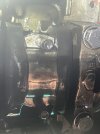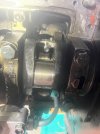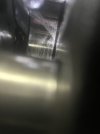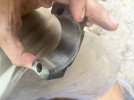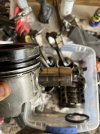I took the engine completely apart. My first time going this deep in an engine. Fortunately no spun main bearings! I ordered a new crankshaft as the nearest shop said it'd run about 500-600$ to grind the crankshaft, whereas I found a new one for $225. Also the Isuzu manual says due to the Tufftride hardening process the cranks shouldn't be reground. The main bearings all show wear similar to this one:
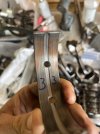
So I'll be replacing all of them. Going to replace all the rod bearings as well, as well as the one wallered out conn rod.
Beyond that, I'm not sure what should be replaced or reused. The top piston ring on all 4 pistons was broken. 3 out of the 4 cylinder liners have one or two of vertical lines like these:
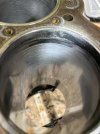
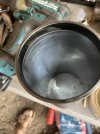
I can't feel the mark with my fingernail, so I don't know if it's a cause for replacing the liners. I have a bore gauge on order so I can't measure the liner diameters until tomorrow.
Cylinder 4 liner was very easy to remove, it actually came out with the piston. The manual describes using a special tool and press to remove the liner, as well as a different tool and press (or dry ice) to insert the liner. Should I be concerned with how easily it came out, and what would cause this?
 photos.app.goo.gl
photos.app.goo.gl

